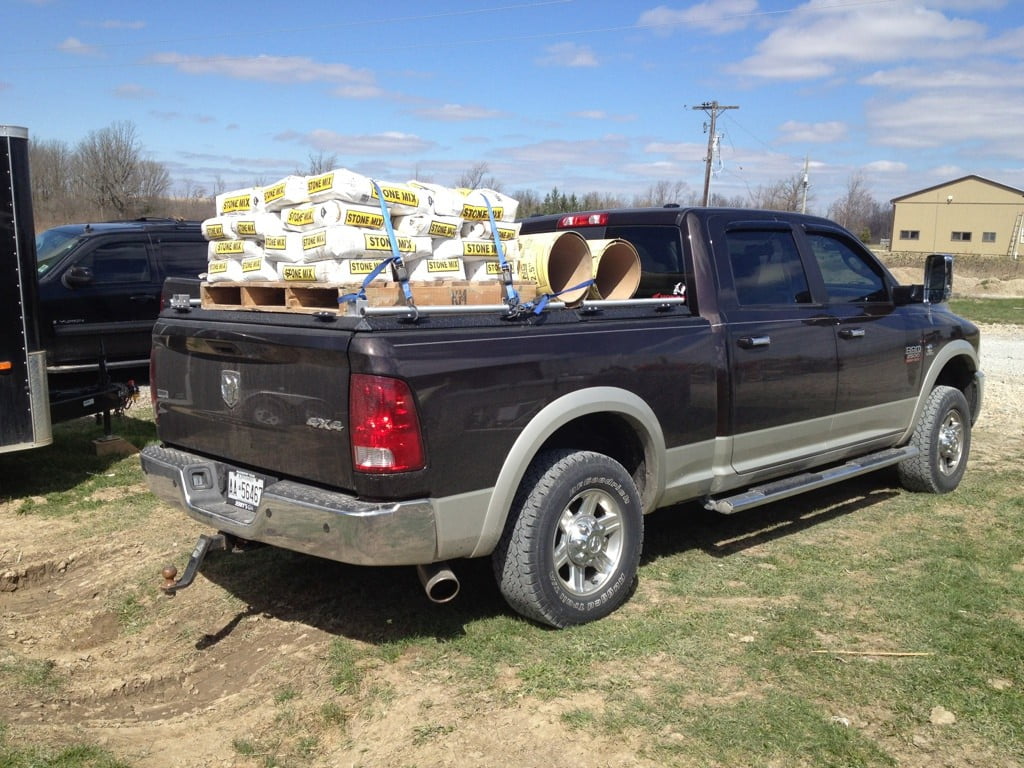All too often you’re driving down the road and boom! You see something that has fallen from an open-bed vehicle in front of you and you need to make a sudden, evasive maneuver to avoid debris. Or maybe there is nowhere for you to go and you have no choice but to hit the object in your lane.
The Transportation Cargo Safety Organization (TCSO) is a not for profit institution dedicated to promoting road safety through ensuring secure cargo loads. TCSO’s ‘Tie It Down’ program is an effort to save lives, protect the environment and reduce the excessive costs governments and private industry spend on road debris injuries, deaths, property damage and clean-up.
So why is it so important to secure your load?
Accidents
Unsecured loads are responsible for about 51,000 accidents each year in North America, resulting in nearly 10,000 injuries and 440 fatalities according to the National Highway Traffic Safety Administration (NHTSA).
Taxpayer Money
Litter cleanup costs the U.S. almost $11.5 billion each year, with businesses paying $9.1 billion. Governments, schools, and other organizations pick up the tab for the remaining $2.4 billion according to Keep America Beautiful, a nonprofit striving to end littering and increase recycling in America.
Roadside Debris
Litter has environmental consequences. About 40 percent of litter along highways and freeways is believed to be this type of “accidental” litter. But failing to secure loads is no accident. It is the driver’s responsibility to make sure that loads are properly secured at all times with tarps and tie-downs.
[hr_invisible]
How to Secure Your Load
Here are some safety tips from Business Fleet for keeping your cargo under control:
- Don’t rely on rope or bungee cords. Bungee cords are not recommended to tie down objects in the back of a truck; nor is rope, which is generally not rated for weight.
- Use ratchet straps and cargo nets. Ratchet straps allow drivers to achieve the amount of torque needed to secure the load. They’re rated for a particular working load limit, which is one-third of their breaking strength. Use straps with a cumulative load limit equal to half the weight of the load. Therefore, tie downs for a 500-pound item should have a working load limit of at least 250 pounds.
- Invest in equipment that will safely secure your cargo. Light-duty tie downs cost $15 or less, a jacking cargo bar for a pickup truck is about $40, and a strong cargo net costs $150 to $200.
- Make sure your items don’t slide. Tie downs, cargo bars and cargo nets will work to keep things from moving around. Sandbags can be used for weighing down light items, but remember that sandbags can be a hazard if not secured themselves.
- Always use two or more tie downs. Even if one tie down will do the job, it is recommended to use at least two to ensure the straps have sufficient control over the cargo.
- Check the weight ratings on your anchor points. Many pickup trucks come with various anchor points for attaching straps, but if they’re not included, there are aftermarket D rings or tie-down anchor points for pickup trucks. If you add them, make sure their weight ratings are appropriate for the cargo you’re carrying.
- Use a tarp or cargo net to secure lightweight items that may blow around while the vehicle is moving. A cargo net rated to the weight of the load is the most effective way to keep items from escaping a truck bed. Cargo nets ensure that lighter-weight items, such as green waste and garbage bags, don’t fly out. An anchored tarp will do the job as well.
- Be sure your straps and tarp don’t become hazards. Any kind of load securement – whether it’s tarps, straps or cargo nets – that comes loose becomes as much a danger as a loose load.
- Balance the load. Be sure the cargo’s weight is centered and placed as close to the axles as possible, which takes advantage of the vehicle frame’s strength. This is especially true with heavier cargo. If you’re carrying both heavy and light items, keep the heavier things on the bottom and secure the lighter items on top.
- If the load extends over the top of the cab, add extra load securement to the top of the load to account for the resulting wind resistance.
- Use a cargo bar for heavier objects. A cargo bar is a simple way to keep heavier objects from sliding around. Add a strap for added protection from sliding. Remember, however, cargo bars alone are ineffective in a rollover.
Anytime you are securing a load in your vehicle, remember you’re preparing for the worst-case scenario. Losing your load costs you money, the taxpayer money, and significant time delays for all. Even worse, an unsecured load creates significant risk to the motoring public.
Reproduced from tieitdown.org and businessfleet.com

